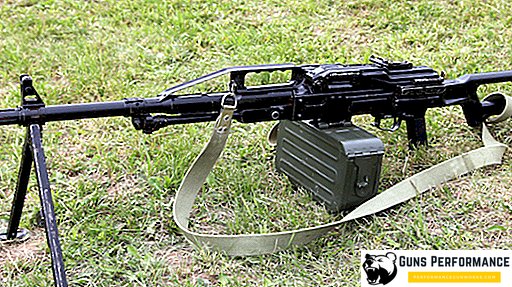
The word "boarding" causes any of us to associate with the heroes of Sabatini, Stevenson, or Mine Reed - to put it simply, with pirates, rushing to board a defenseless merchant ship. Some "experts" even attribute the invention of this weapon to filibusters themselves. Let's see what was the boarding saber.

Story
This weapon is obliged by its harsh necessity: it was inconvenient to wield a long blade in ship's cramp. The pirates allegedly shortened the blade and successfully operated with a compact tool. Perhaps someone did just that - but it is still logical to assume that the authors of the novelty were professional sailors.
At all times, the army and navy responded much faster to changes in combat conditions and to the progress of weapons that could be used in them with maximum effect. Therefore, it is more likely that the boarding saber appeared first in the arsenal of sailors, and only then migrated to the pirates. By the way, this statement is supported by the fact that most of the sabers found by archaeologists have a more or less uniform shape and blade width. Consequently, they were made according to a certain standard, and were not made of the blades selected wherever they were.
The first mention of this weapon belongs to the second half of the XVII century, and it successfully existed almost to the present day. Such "survivability" of the boarding saber is explained by the fact that it was the ideal weapon for fighting in close quarters and did not need to be replaced. The wide blade left terrible wounds upon impact, which quickly inflamed in the humid maritime climate. At the then level of development of medicine, in most cases they led to death.
It is not surprising that this massive and heavy blade rapidly gained popularity among sea robbers. Besides, learning how to handle it was very easy. No carcass, floss and other sophisticated fencing wisdom during the boarding was not required. We needed speed and onslaught, and the boarding saber fully complied with these qualities.
There is another version of its origin: the sea dirk, which received an extended and widened blade, as well as a guard protecting fingers from a blow, became the saber’s “progenitor”. She could, like brass knuckles, deliver a crushing blow to the enemy's face.

Boarding Saber Device
This weapon had a slightly curved wide blade 60-70 cm long and up to 4-5 wide. Daly often absent (which would be nonsense in the manufacture of the fragment of a long saber). The sharpening was on the outer side of the blade, but it was also one and a half. It was convenient when applying piercing-ripping blows.
But they chopped up the boarding sword only occasionally - when the space allowed to swing. More often, the enemies of the “victims” of the chopping blows of the boarding saber became ship's gear. The saber handle was massive, often covered with leather for better fixation in the hand. According to rumors, brave sea wolves used the skin of young sharks. However, this sounds very doubtful, given that the shark skin on the texture resembles sandpaper and it was very easy to cut off the palm of the meat.
The saber usually did not have any decorations, although ceremonial blades of this type are also known. But this can be considered more likely an exception to the general rule: the saber was a purely combat, functional weapon, the sheen brilliance of which was simply not needed. Sheaths were often also absent: a short and not very sharp blade was convenient to just put in the belt, and in battle the absence of the sheath became an advantage: nothing hung around the belt and did not interfere with mobility.
Spread
The "habitat" of this formidable weapon is easily derived from its name. A boarding saber could be found wherever either pirates or marines met. That is, England, Spain and the Caribbean islands. It can be assumed that the most often sabers of this type could be seen on Tortuga - the legendary pirate island state of filibusters. By the way, the local population used the boarding sword for purely economic, peaceful purposes. With its help, they cut through thick thickets, finished off their prey while hunting and often chopped firewood. Therefore, among lovers of cold arms often arise disputes on the topic: "boarding saber derived from the machete or - on the contrary?". It is already difficult to say if at least one of the parties is right - and, by and large, is this important?
Currently
As mentioned above, the "pirate" blade lost its relevance with the disappearance of the sailing fleet. Agree, it is difficult to imagine a modern yachtsman climbing aboard his rival with a boarding saber teeth. So now such a blade can be seen only as a replica in a movie, computer games or an arsenal of role-playing reenactors, where it is called the "cutlass" (from the English "Cutlass").












